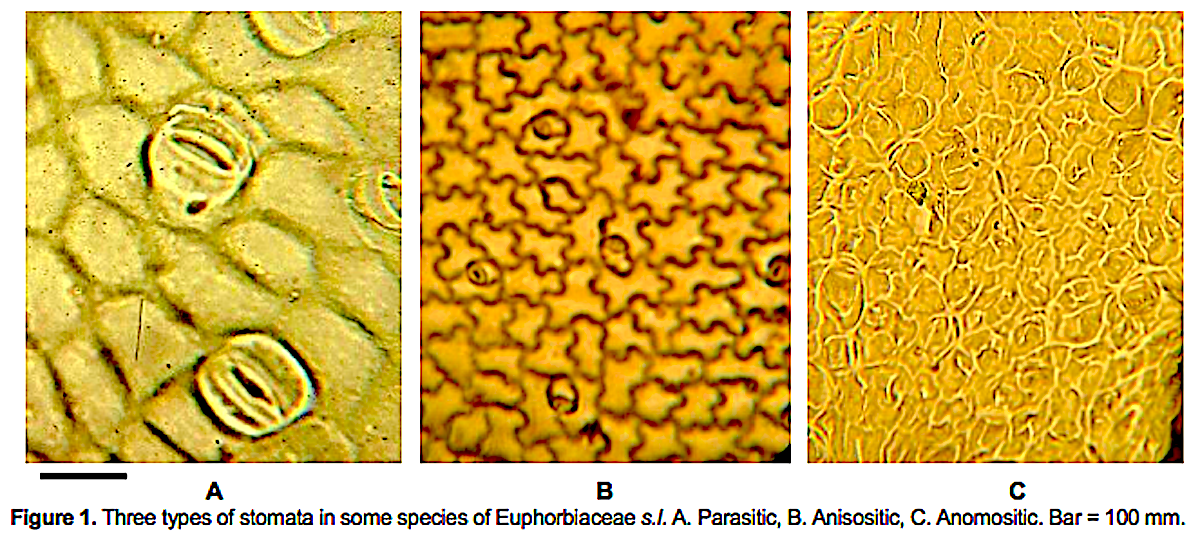
Stomata Diversification and Phylogenenetic Analysis of 13 Species of Family Euphorbiaceae sensu lato
by Hidayat T., Kusdianti (2009)
Topîk Hidayat, Kusdianti,
Department of Biology Education, Faculty of Mathematics and Natural Sciences Education, Indonesia University of Education (UPI), Bandung 40154.
===
In Biodiversitas 10(1): 19-22 – DOI: 10.13057/biodiv/d100104 –
Click to access 7ec7682fb0443f92c8b033c87d962b85407a.pdf
Abstract
Investigation on diversity of stomata from 13 species of family Euphorbiaceae has been carried out.
Characters like type of stomata, position of stomata, presence/absence of ledge, and density both abaxial and adaxial leaf surface were examined. Stomata characters in the family were found quite diverse in this study. Monophyletic nature of Euphorbiaceae has been proved in this study on the basis of phylogenetic analysis using parsimoni method.
Our data further suggested that the family can be classified into two major groups. However, surprisingly, genus Phyllanthus is non-monophyletic.

You must be logged in to post a comment.